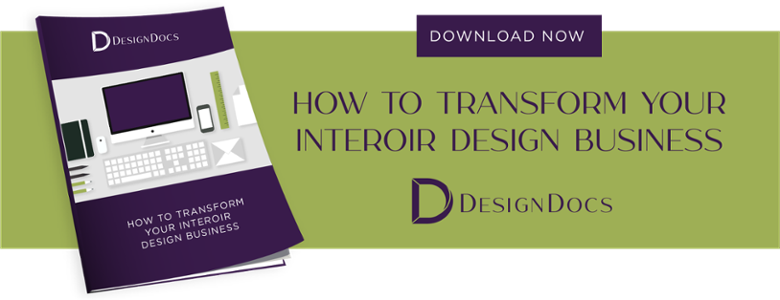Any significant event or incident can have lasting effects on the world and the way in which we operate. Be it financial crashes, social movements, or natural disasters. When these events occur, the human race quickly learns how to adapt and change to enable it to continue to survive and flourish.
Across the world, you'd be hard-pressed to find someone who hasn't had to change the way they conduct themselves on a daily basis or with how they run their business due to COVID-19.
For the interior design industry, it certainly has been a challenge. From supply chain delays to remote working, halts in the construction industry, or the need to suddenly scale up or down with staffing, being able to quickly pivot the way in which you manage your projects or design firm has been crucial to its survival.
But what does the future of the interior design industry look like as we continue to live through this pandemic? Here is a summary of 7 long-term impacts COVID-19 has had on the design industry.
1. A FOCUS ON BEING FLEXIBLE
With delays on materials and furniture manufacturing, interior designers and their clients have had to be more flexible now than ever before. With many vendors or workrooms being temporarily closed and postal services experiencing significant delays, supply chains have slowed. This situation has shaped the way design firms collaborate with vendors and builders. As a result, the industry as a whole has needed to become more flexible, amenable, and understanding. A designer can control only so many things in a project, and adapting to the changes that get thrown their way has been crucial. This flexible approach, we think, will likely remain post-pandemic.
2. A FOCUS ON MANAGING CLIENT’S EXPECTATIONS
Managing client expectations now looks a little different as well. Before COVID, lead times were much more predictable. Your firm starts a project in August, and you can tell your client with confidence that they'll be sitting around the dinner table with their loved ones come Thanksgiving. However, now it's so essential to make it clear to clients from the outset that everything is "subject to change." While you have the best intentions of delivering their project on time, it's important they understand there are many things that can impact its on-time completion that are out of your control. From delivery dates to the availability of certain materials and finishes, successful designers have become pros at managing client expectations like never before, ensuring transparency every step of the way.
3. A FOCUS ON FUNCTIONAL HOMES
Lockdowns, quarantines, and isolation mandates have certainly changed the way people view their homes. We soon realized how much more functional our homes needed to be; to sharing space with family, accommodating working from home needs, and having a zone to relax and unwind in. With many companies continuing to have their staff working remotely for the foreseeable future, people continue to opt for home office spaces that are functional and practical. Separate rooms in a house deliver more privacy than open-plan layouts, and requests for these features in new home builds or renovations will undoubtedly continue to be popular in the foreseeable future.
4. A FOCUS ON FLAWLESS HOMES
In addition to people realizing that they need functional spaces, they are also becoming more aware of those things that just don't sit right with them in their homes. Now they cook more at home, that restricting kitchen is driving them crazy; that living room wallpaper just has to go (and while you're at it, can we replace the fireplace too?). The result is a surge in client spending after so much time locked up. Things that have been overlooked for years will continue to be magnified as clients spend more time at home. There's also a good chance they'll be willing to pay top dollar to ensure only the best quality in their new home design.
5. A FOCUS ON COLLABORATION
COVID has also taught us to value the time we have together in person. There's no doubt about it - brainstorming ideas and feeding off each other's creativity is made all the more difficult via a computer screen or phone call. The awareness of this means that successful design firms will always strive to encourage this ability to physically connect and collaborate whenever they can. Firms that want to keep that inspiring in-office culture will likely find new ways to ensure COVID-safe practices and cleanliness is adhered to within their offices at all times.
6. A FOCUS ON RESOURCEFUL COMMUNICATION
Communication is vital in any design project. Throughout the pandemic, designers have had to become more innovative with how they communicate daily. Connecting with clients, vendors, or internal staff through shared platforms like Zoom and Instagram Live has become a staple for the creative community during COVID. Even Elle Décor bought out their own range of showstopping Zoom backgrounds as they realized this dependence that the world now has on video conferencing and calling.
This opening up of the virtual world has also meant that even major design events have continued throughout the pandemic. No longer are design professionals unable to attend events on the other side of the world because of their geographic location, schedule clashes, or expense. Attending an event virtually is something that will most definitely continue long after the COVID-19 dust settles.
7. A FOCUS ON HAVING THE RIGHT TOOLS
The design industry may be unpredictable right now, but that doesn't mean your workflow has to be. Now more than ever, design firms realize the importance of investing in reliable and transformative cloud-based project management software. With cloud-based software, you and your team can access project details and specifics anywhere, anytime. This means you're able to keep projects moving along as much as what is within your control. Utilizing interior design-specific software like DesignDocs will help alleviate any business pressure points, encourage growth in your firm, and keep things on track.




